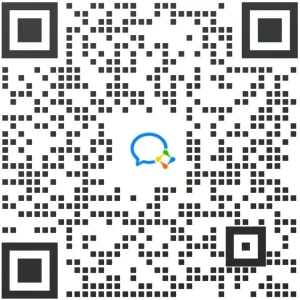Mar.
Click the blue text to follow us
2025.03

Source: Content compiled from Wired, thank you.
Almost everyone uses Bluetooth every day, but what exactly is it? Bluetooth is a ubiquitous wireless connection standard that connects our headphones, speakers, smartwatches, and smart rings to our phones; connects headphones, keyboards, and mice to laptops; and even allows broadcasting audio to individuals or large audiences in public places using Auracast.
In this Bluetooth guide, I will briefly explain how it works, review its twenty-year history to describe the differences between various versions, and explore the next developments of the standard.
How Does Bluetooth Work?
Bluetooth enables supported devices to connect wirelessly using high-frequency radio waves. Bluetooth operates in the 2.4 GHz band, similar to 2.4 GHz Wi-Fi, but it employs Adaptive Frequency Hopping (AFH) technology to avoid crowded frequencies and limit interference. Bluetooth also has lower power consumption, a smaller range, and is not as fast as 2.4 GHz Wi-Fi.
Bluetooth has some vulnerabilities, but maintaining security is not difficult, and the latest versions are designed to be more secure. Everyone has encountered Bluetooth pairing issues and annoying glitches—we have a guide to help you troubleshoot Bluetooth problems—but it is a powerful standard that remains very convenient, hence its popularity. Each version of Bluetooth is backward compatible, meaning Bluetooth 5.3 devices can connect to Bluetooth 4.0 devices. However, features and functionalities are always limited by older devices.
Companies use Bluetooth in many proprietary features, such as Apple’s AirDrop and Google’s Quick Share. While the U1 chip in Apple devices supports Ultra-Wideband (UWB) technology to determine the direction of the phone and help you share files with nearby devices, AirDrop uses Bluetooth for the initial discovery process and then switches to Wi-Fi to transfer files. Google merged Nearby Share with Samsung’s Quick Share in 2024, which is very similar to AirDrop; it uses Bluetooth to establish a connection and then uses Wi-Fi to transfer files.
These are just two examples. Google also has a standard called “Fast Pair” that quickly connects wireless devices to smartphones, which also uses Bluetooth.
The History of Bluetooth
Bluetooth is named after King Harald “Bluetooth” Gormsson, whose initials are combined in a rune that forms the logo; he literally had a blue tooth (which he lost). He unified Denmark and Norway in 958. This short-range radio technology originated from a meeting between Intel, Ericsson, and Nokia in 1996. The first version was not released until 1999, but Bluetooth did not become popular until several years later.
The standard is managed by the non-profit Bluetooth Special Interest Group (Bluetooth SIG), headquartered in the United States. While there are thousands of members, the most influential companies help shape the direction of the standard, including Ericsson, Intel, Nokia, Apple, Microsoft, Lenovo, and Google.
Each version has brought countless incremental improvements, making Bluetooth faster, more efficient, more secure, and less error-prone, but we will only cover the main features here.
Point follow and star with non-network eefocus
Scan the code and reply with the keyword “Electronics, Chips” for industry groups and to receive reports

-
Bluetooth 1.2, launched in 2003, addressed how to avoid Wi-Fi interference and achieve faster pairing, helping to popularize the standard.
-
Bluetooth 2.0, released in 2004, introduced EDR (Enhanced Data Rate), doubling the data rate from 1 Mbps to 3 Mbps.
-
Bluetooth 2.1, released in 2007, introduced SSP (Secure Simple Pairing), enhancing security and reducing power consumption.
-
Bluetooth 3.0 + HS (High Speed), launched in 2009, initially connected via Bluetooth and then switched to Wi-Fi, increasing the rate.
-
Bluetooth 4.0 LE (Low Energy) was released in 2010, further reducing power requirements.
-
Bluetooth 4.1, released in 2013, allowed Bluetooth devices to communicate with each other.
-
Bluetooth 4.2, released in 2014, improved data rates and IoT connectivity.
-
Bluetooth 5, launched in 2016, significantly increased the potential range from about 50 meters to over 200 meters. However, the range depends on the power class, which is divided into three classes. Class 1 devices have the longest range and highest power consumption, Class 2 is limited to about 10 meters, and Class 3 is only 1 meter.
-
Bluetooth 5.1, released in 2019, brought faster pairing and better tracking accuracy.
-
Bluetooth 5.2, released in 2020, allowed multiple data streams to be transmitted simultaneously and better controlled the power and signal required for connected devices.
-
Bluetooth 5.3, launched in 2021, improved audio quality, increased power efficiency, and broader compatibility.
-
Bluetooth 5.4, released in 2023, enhanced security and reduced latency, but it also included features for retailers to monitor and change electronic shelf labels (ESL). Devices supporting ESL are expected to ship by 2027.
-
Bluetooth 6.0 is the latest version, set to be released in 2024. It includes a feature called “Channel Detection” for precise tracking, allowing two devices to accurately measure the distance between them while also achieving various efficiency improvements.
How to Use Bluetooth
One of the main reasons Bluetooth is so popular is its ease of use. Typically, you can turn on Bluetooth through the settings on your phone or computer and then find the menu for connectable devices. Sometimes, you need to put the device you want to connect into pairing mode, which may require holding down a button (please consult the device manufacturer). A pairing window usually pops up on one or both devices for you to accept the connection.
Many devices have chipsets with built-in Bluetooth support, but if your computer or laptop does not support Bluetooth, you can always add it via an adapter.
What’s Next for Bluetooth?
One of the most exciting upcoming features for Bluetooth is Auracast. Announced by Bluetooth SIG in 2022, the idea is that you will be able to broadcast and join audio streams in public places by selecting a stream from a list (just like you currently join a Wi-Fi network), scanning a QR code, or tapping on a place with the Auracast logo.
Auracast allows multiple people to connect to the same audio stream simultaneously and can be used to watch movies together in the backseat of a car via a smartphone, receive audio from televisions in public places like gyms, or enhance accessibility for the deaf and hard of hearing by allowing them to stream audio directly to hearing aids at public concerts.
The catch is that devices must support Bluetooth 5.2 or higher and the Public Broadcast Profile (PBP) to receive Auracast streams. Devices with transmitter capabilities may take some time to roll out, but we may see plugins supporting this feature in the short term. Venue adoption is another hurdle, as they must deploy Auracast broadcast transmitters, so it may take several more years for widespread adoption.
Reference Link
https://www.wired.com/story/what-is-bluetooth/
END
Feel free to leave comments and engage in discussions!


Industry Community

